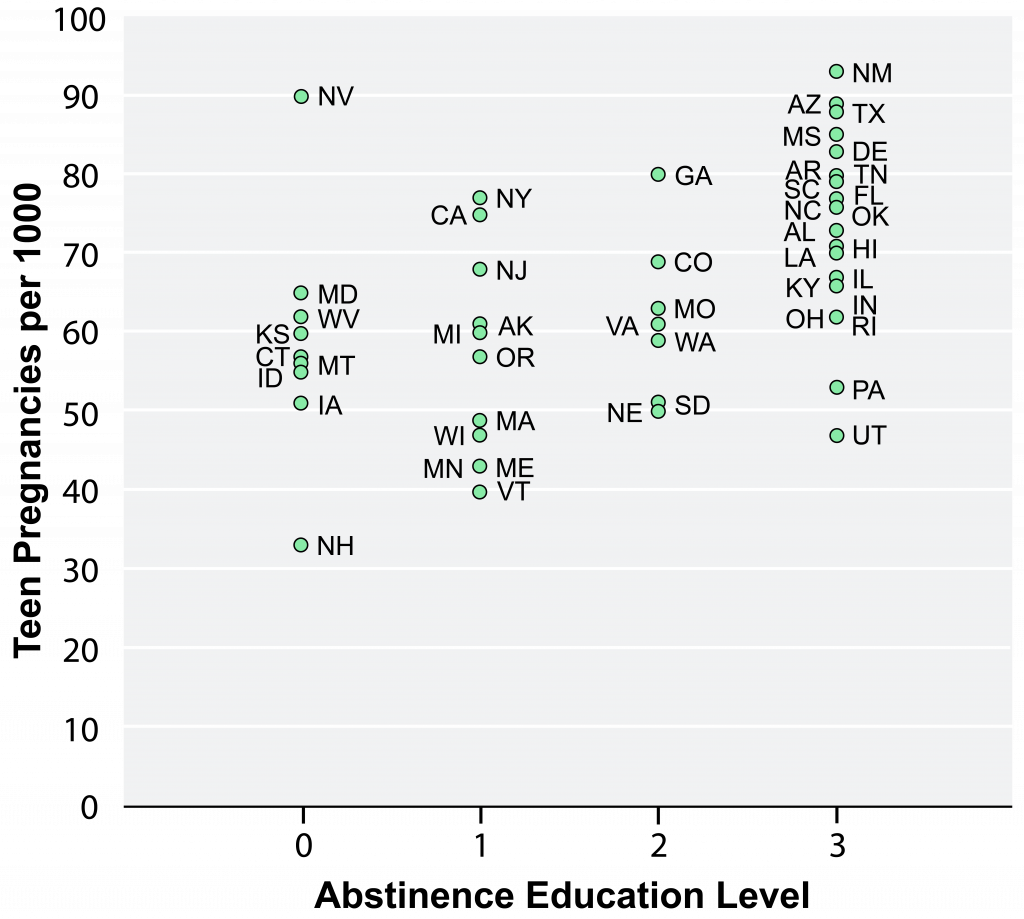14.10 Wrapping Up: Returning to Sex Education
 What do you know about sex education?
What do you know about sex education?
What happens when children are taught about copulation and sexual intimacy? What are the consequences to not teaching sex education? What are the impacts of so-called “comprehensive sex education” compared to so-called “abstinence-only” sex education? Comprehensive sex education involves age-appropriate instruction that explains that abstinence from sex is the least risky sexual behavior, but also includes information on birth control, sexually transmitted infections, healthy relationships, and other topics. “Abstinence-only” programs limit information on contraception and sexually transmitted infections and promote the expectation of abstaining from sex until marriage. So what are the outcomes of these two approaches to teaching sex education?

In an analysis of published studies, researchers (Chin et al., 2012) found that children who received comprehensive sex education compared to those who received no sex education had lower sexual activity, lower numbers of sex partners, lower incidences of unprotected sex, lower pregnancy rates, and increased use of contraceptives. Children who received abstinence–only education had lower sexual activity, but no difference in number of sex partners, unprotected sexual activity, frequency of contraceptives, or pregnancy when compared to those who received no sex education. In other words, abstinence-only sex education has only slightly different outcomes than no sex education at all.
Storks delivering babies and finding infants under cabbage leaves make for adorable imagery. However, you will probably not be surprised that the authors of this text are convinced (by the above data and numerous other studies) that children need more information than these fables to make healthy decisions about their sex lives, to protect themselves, and to engage in healthy relationships.

